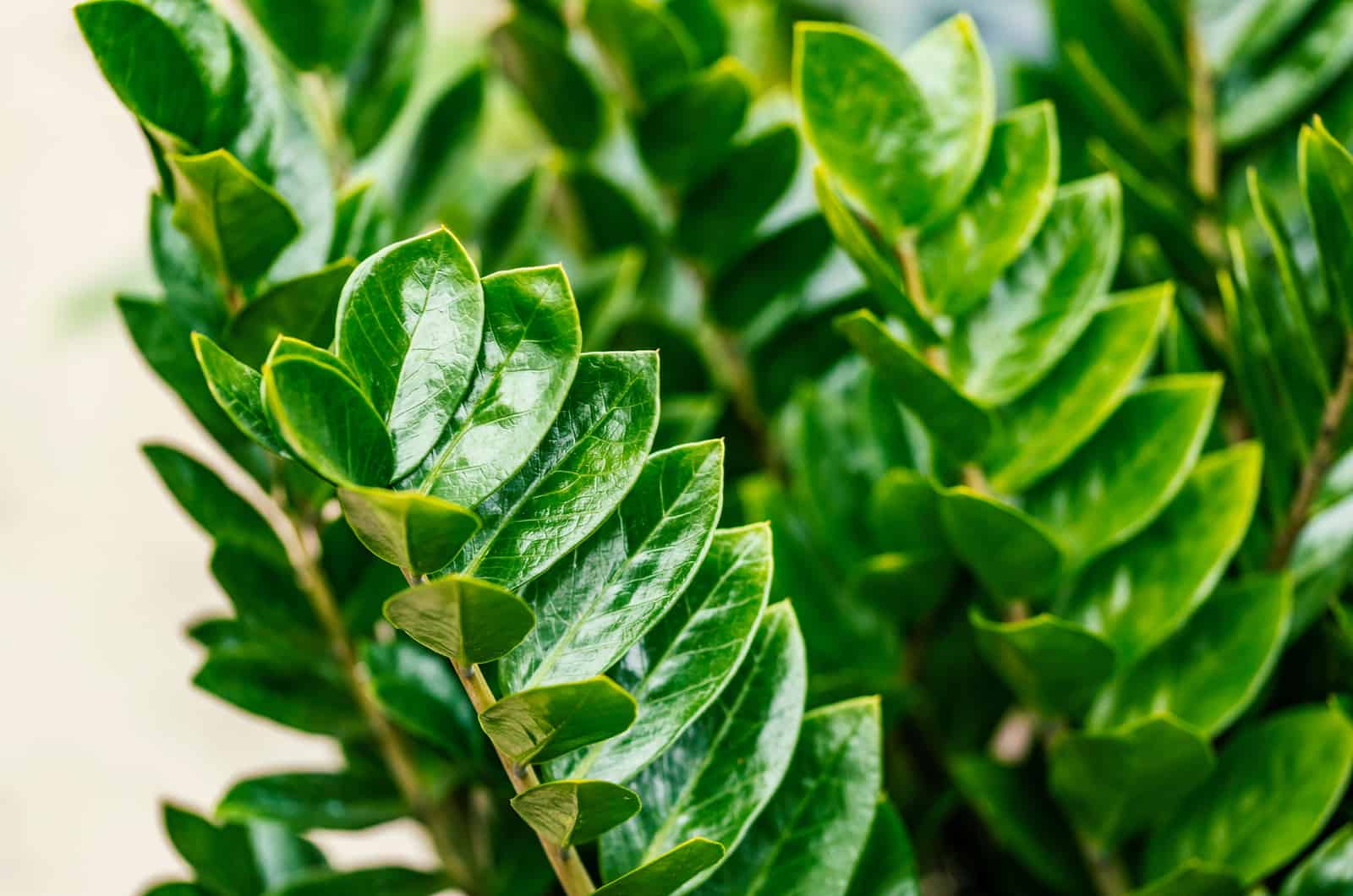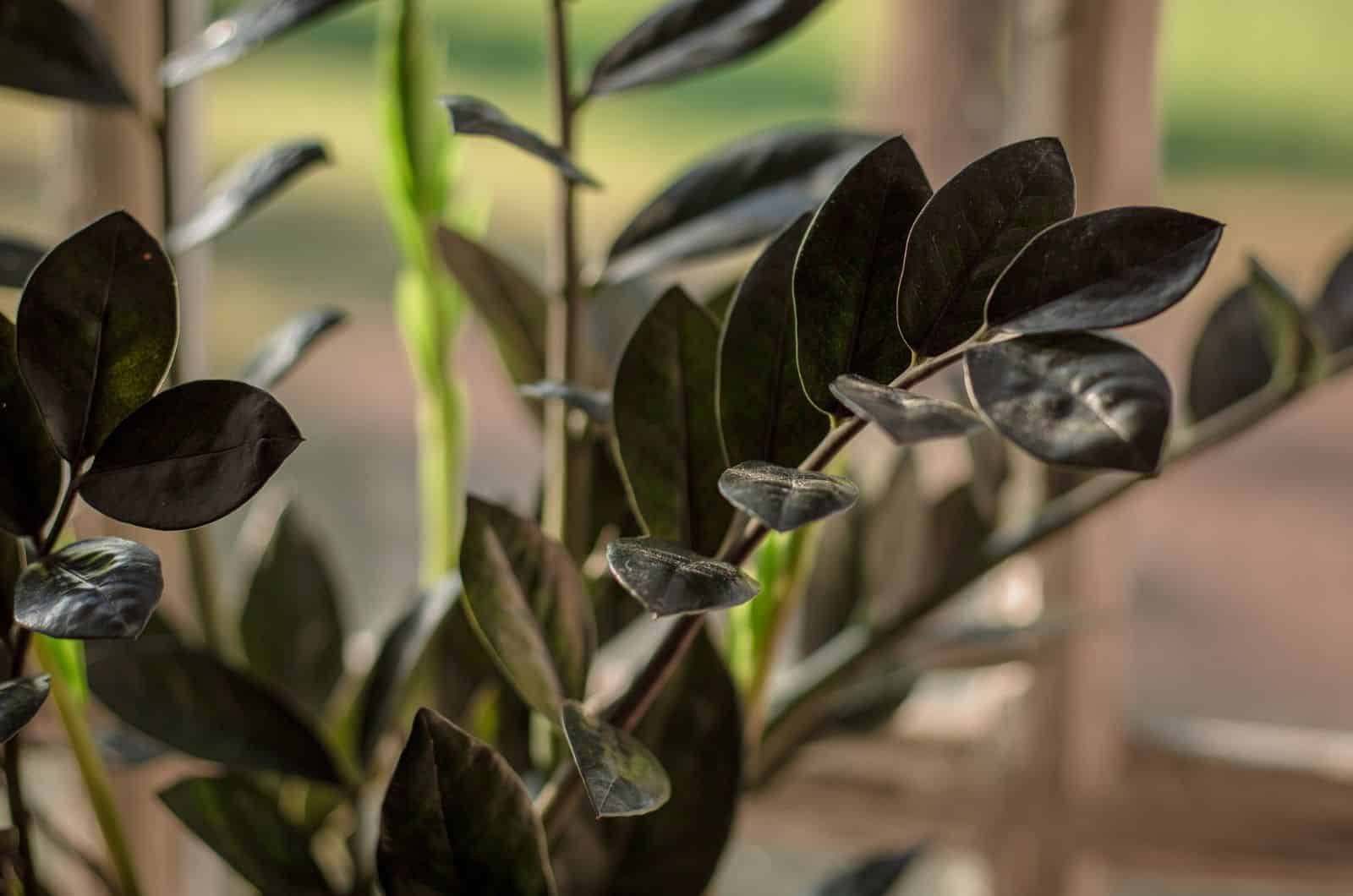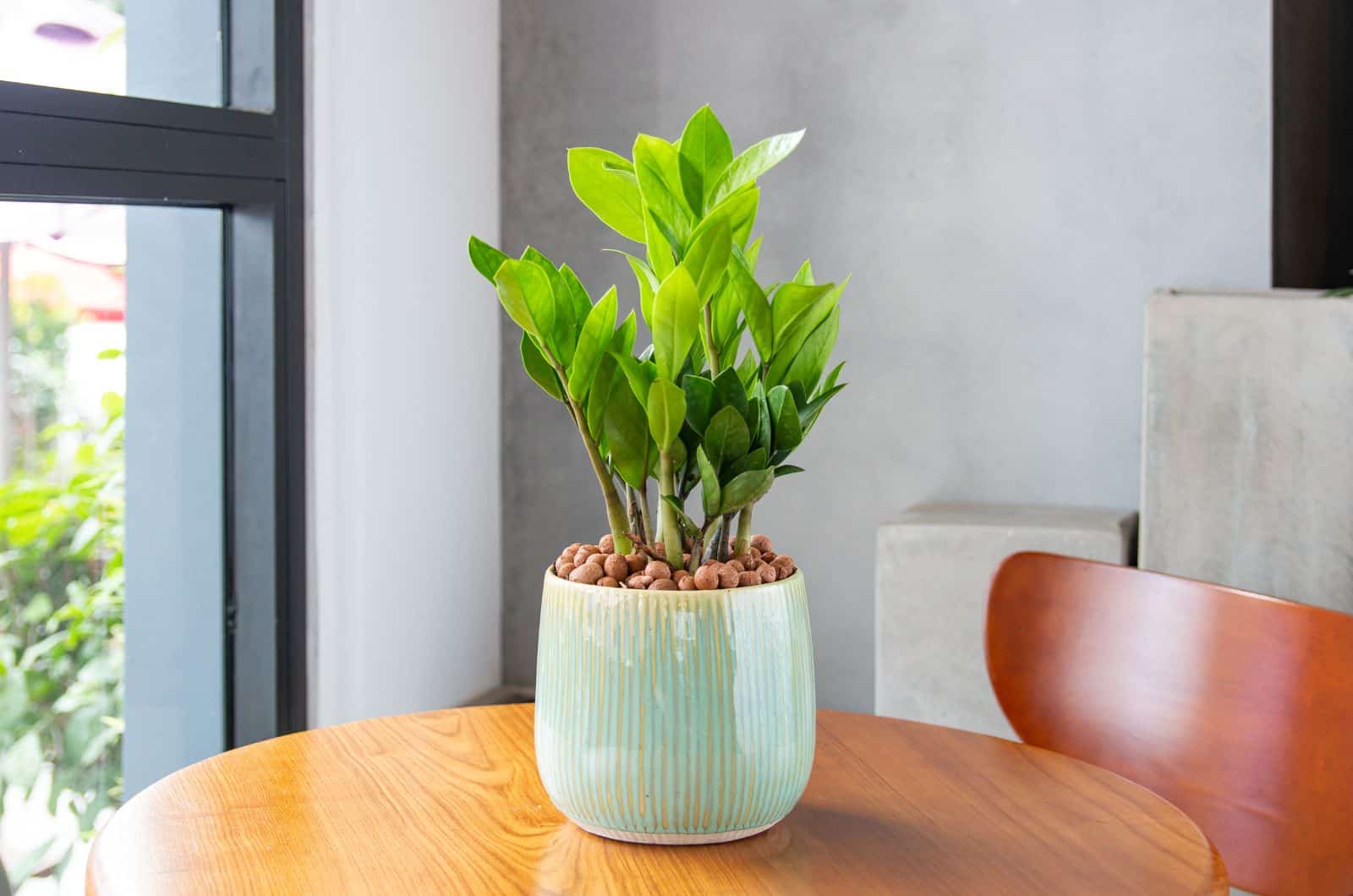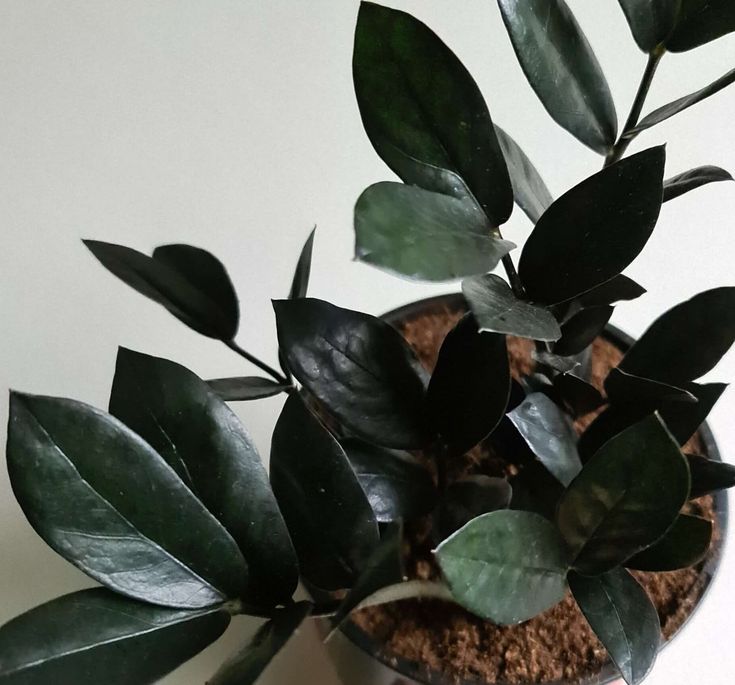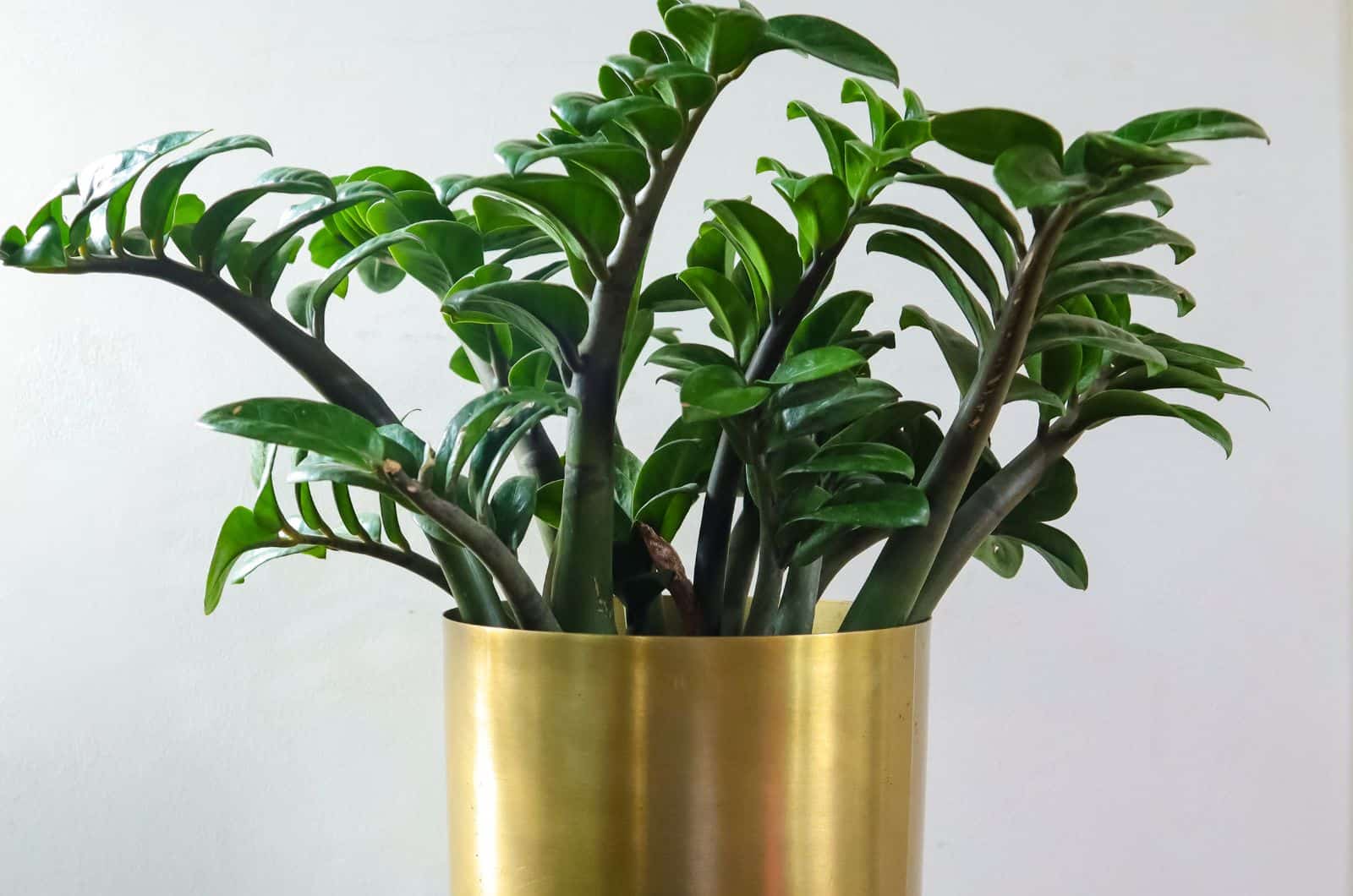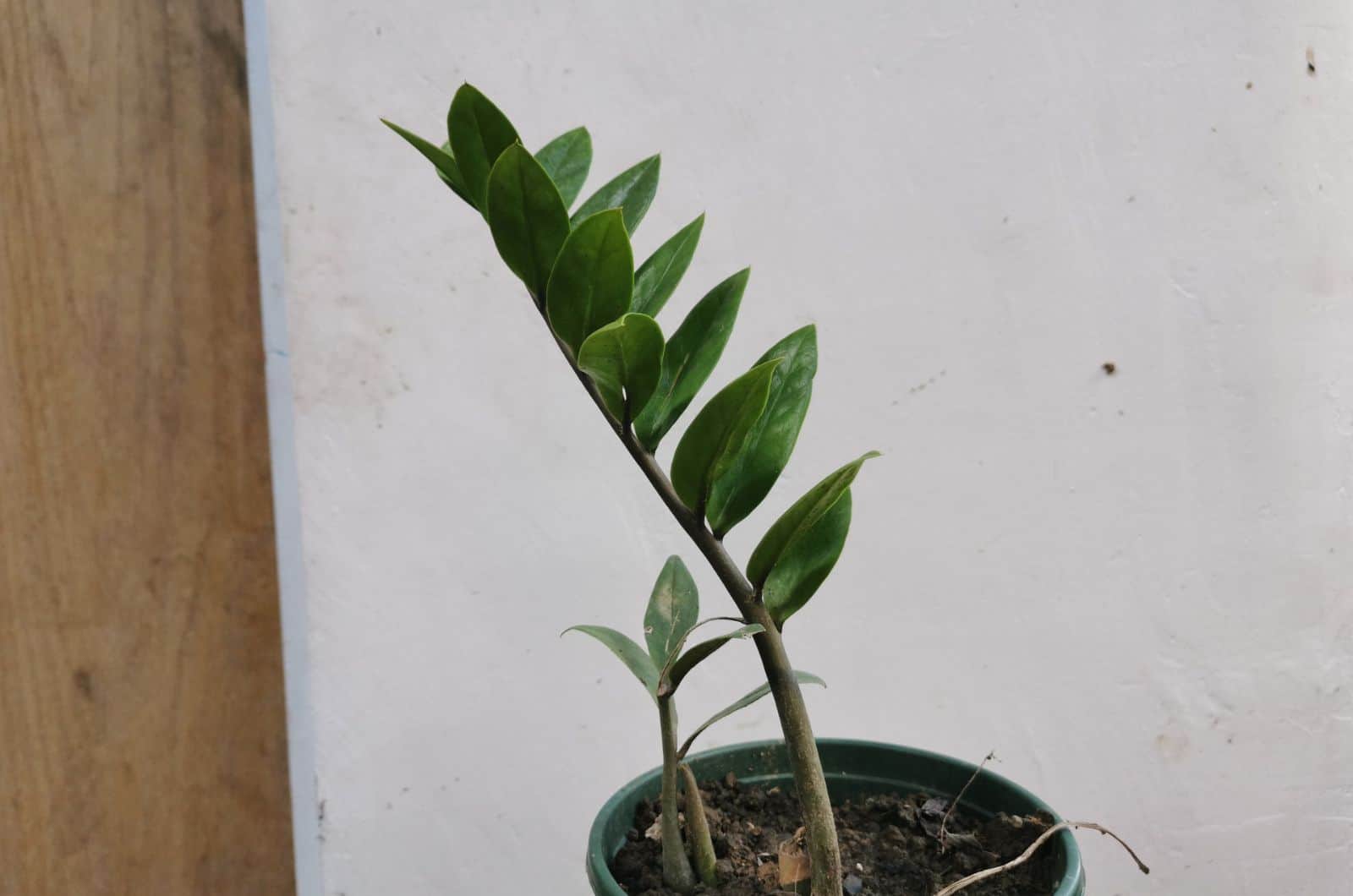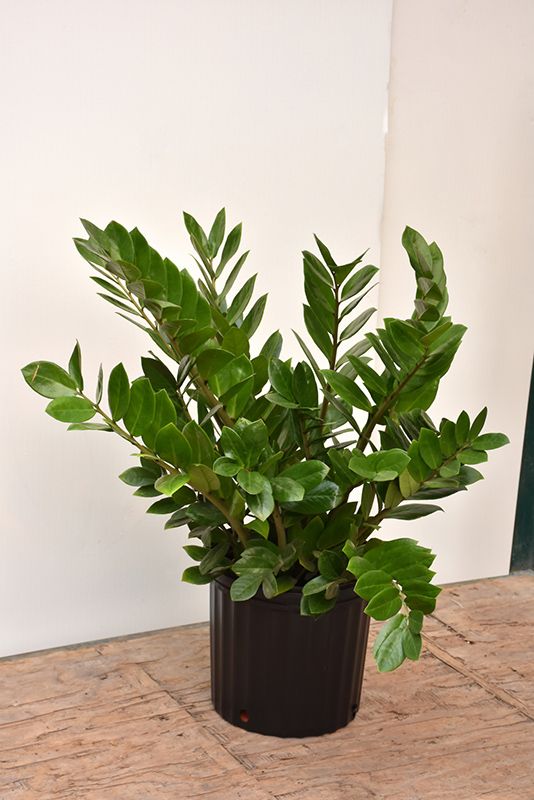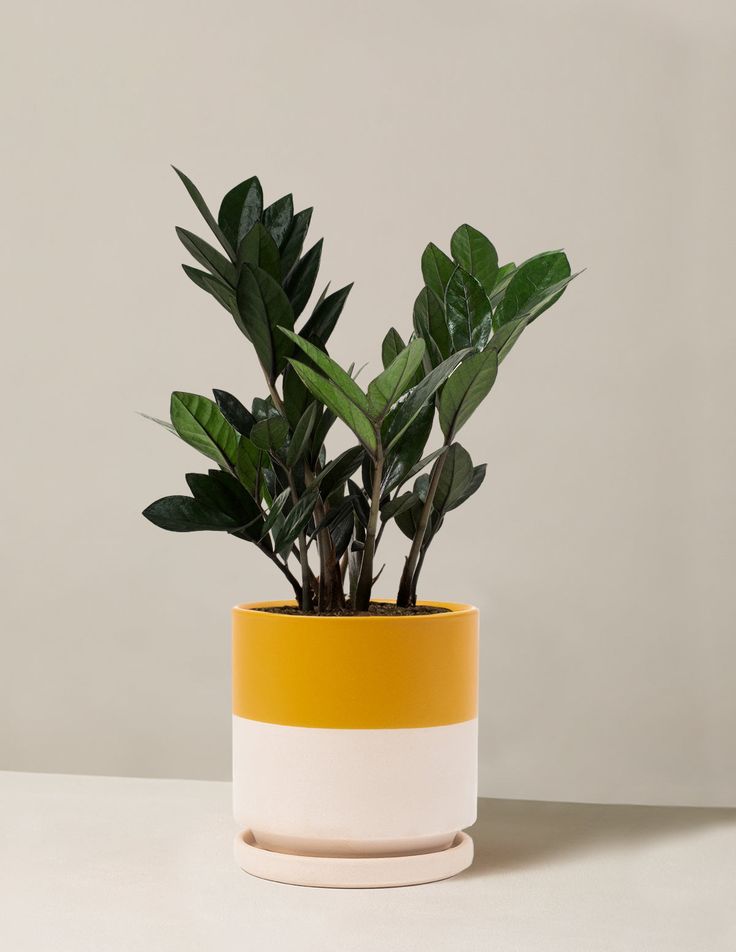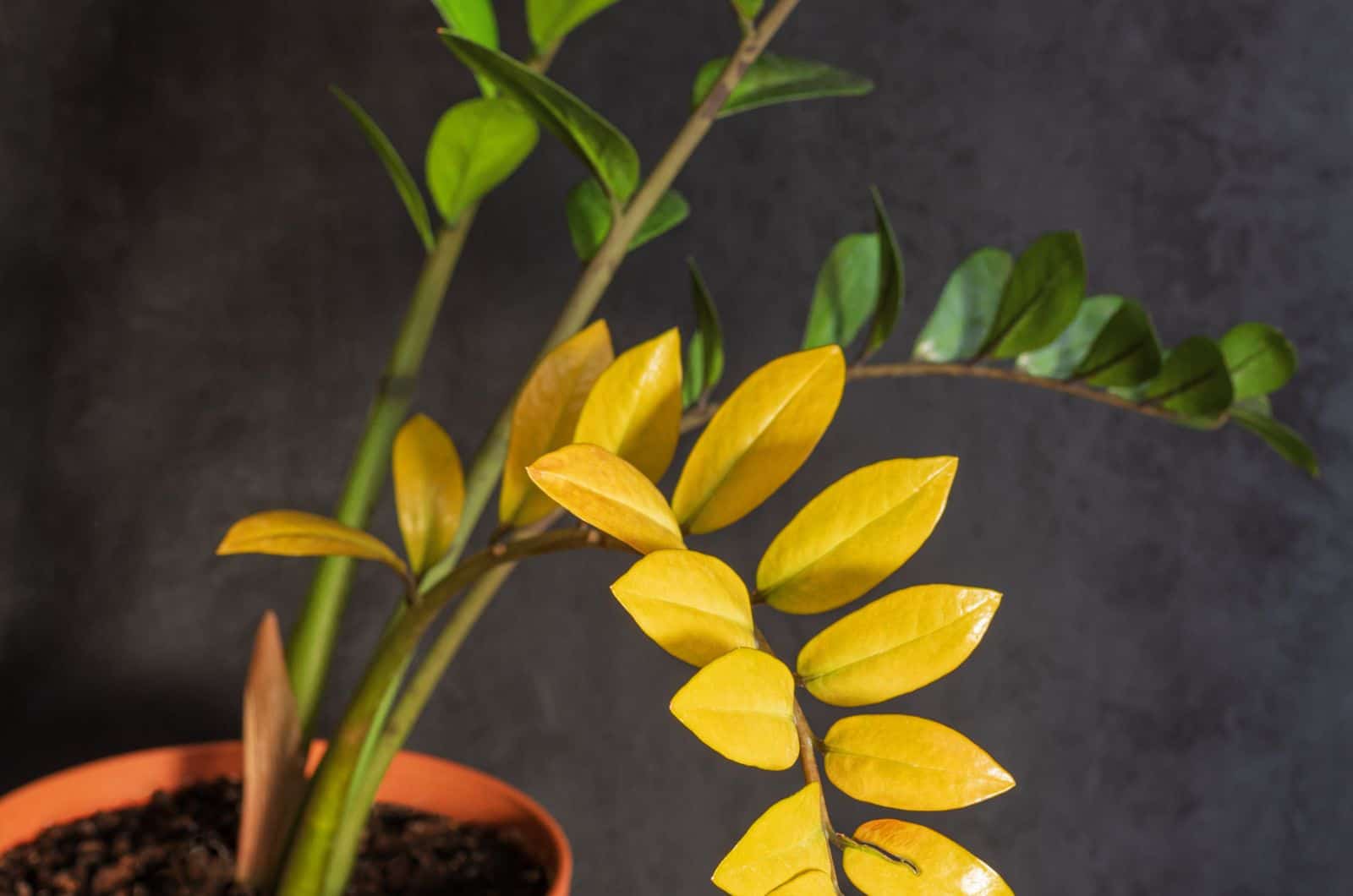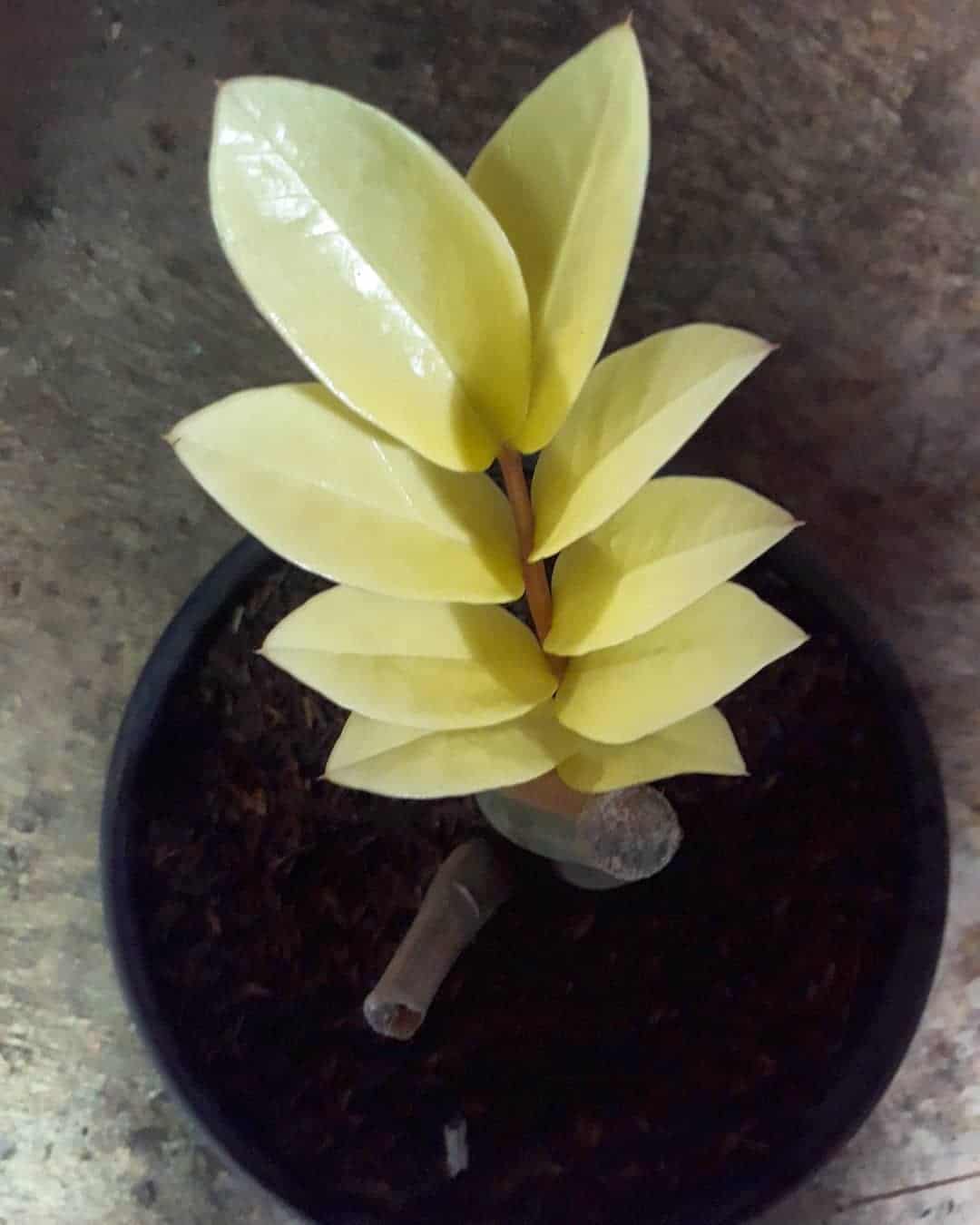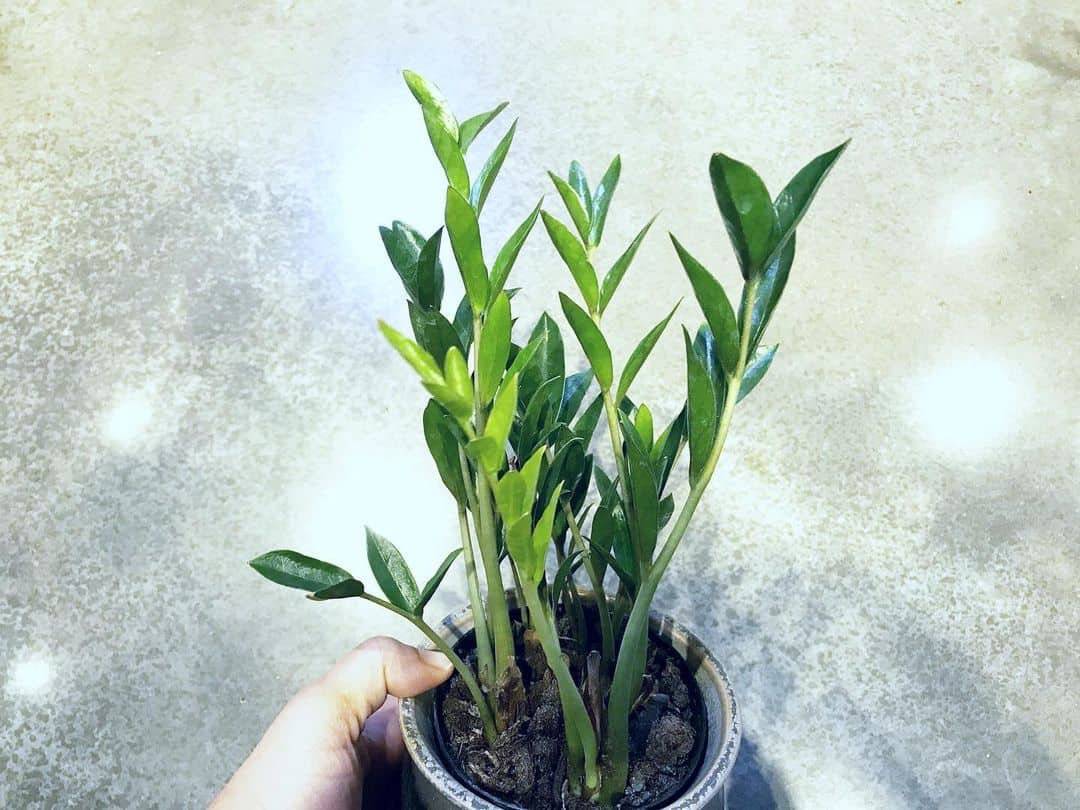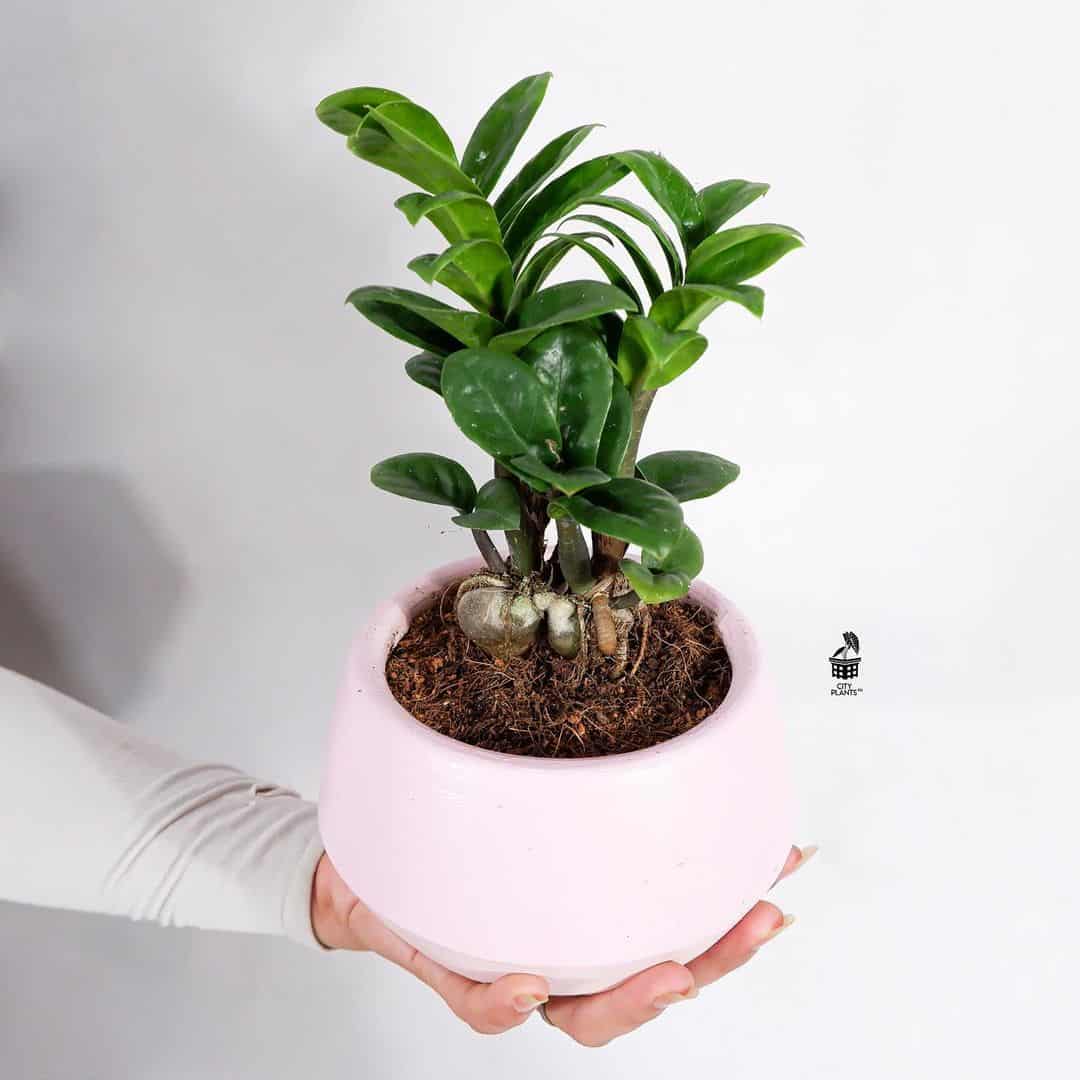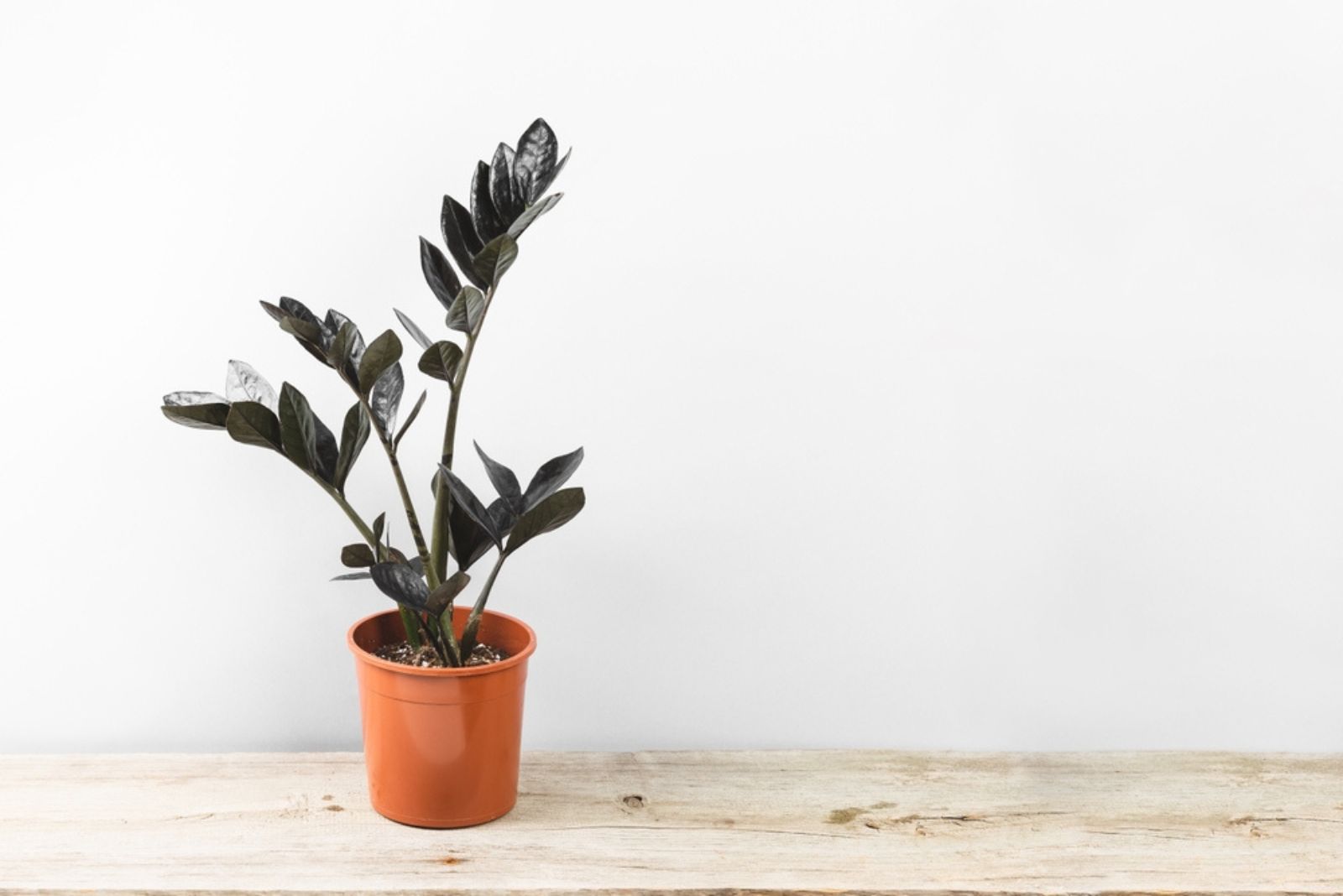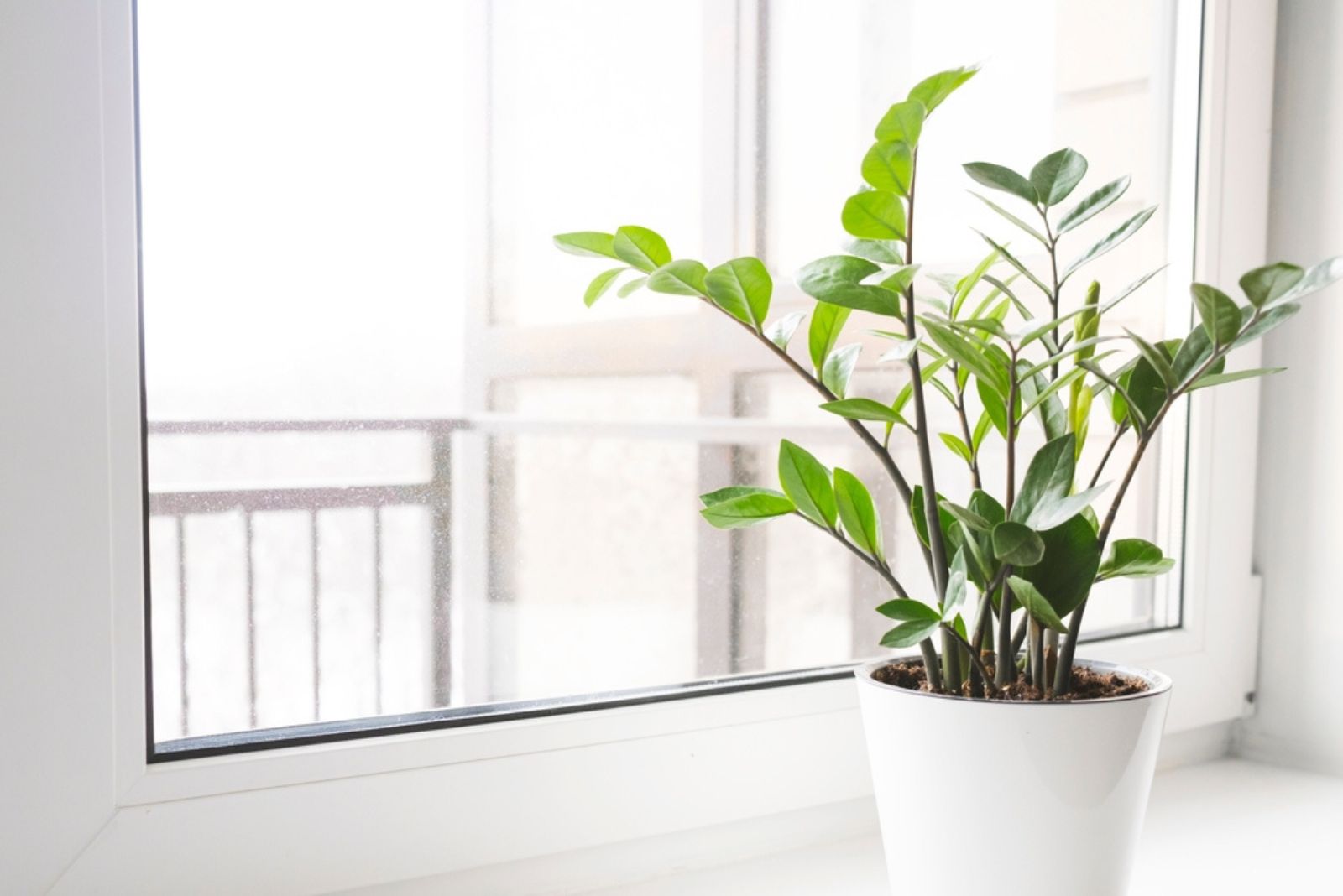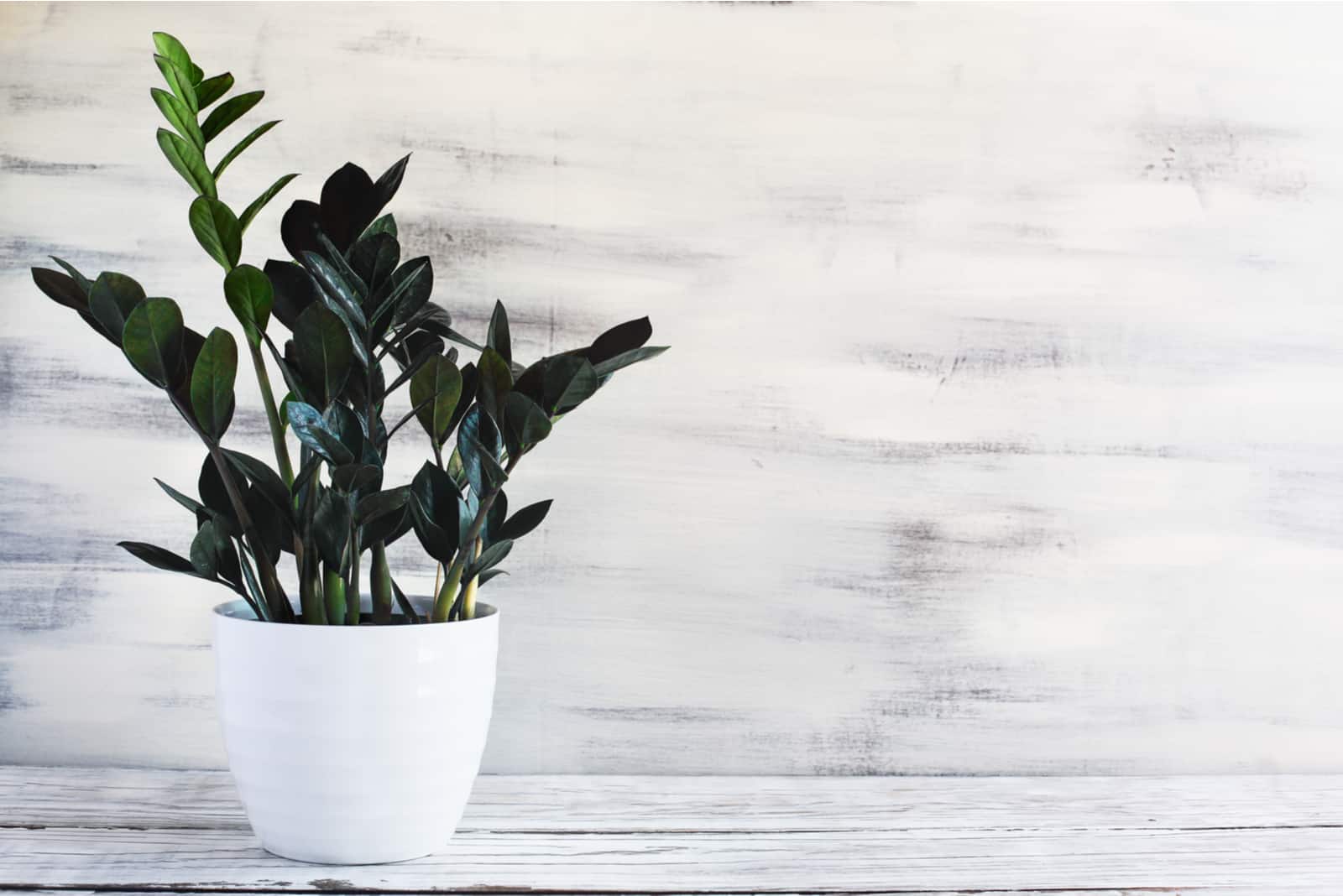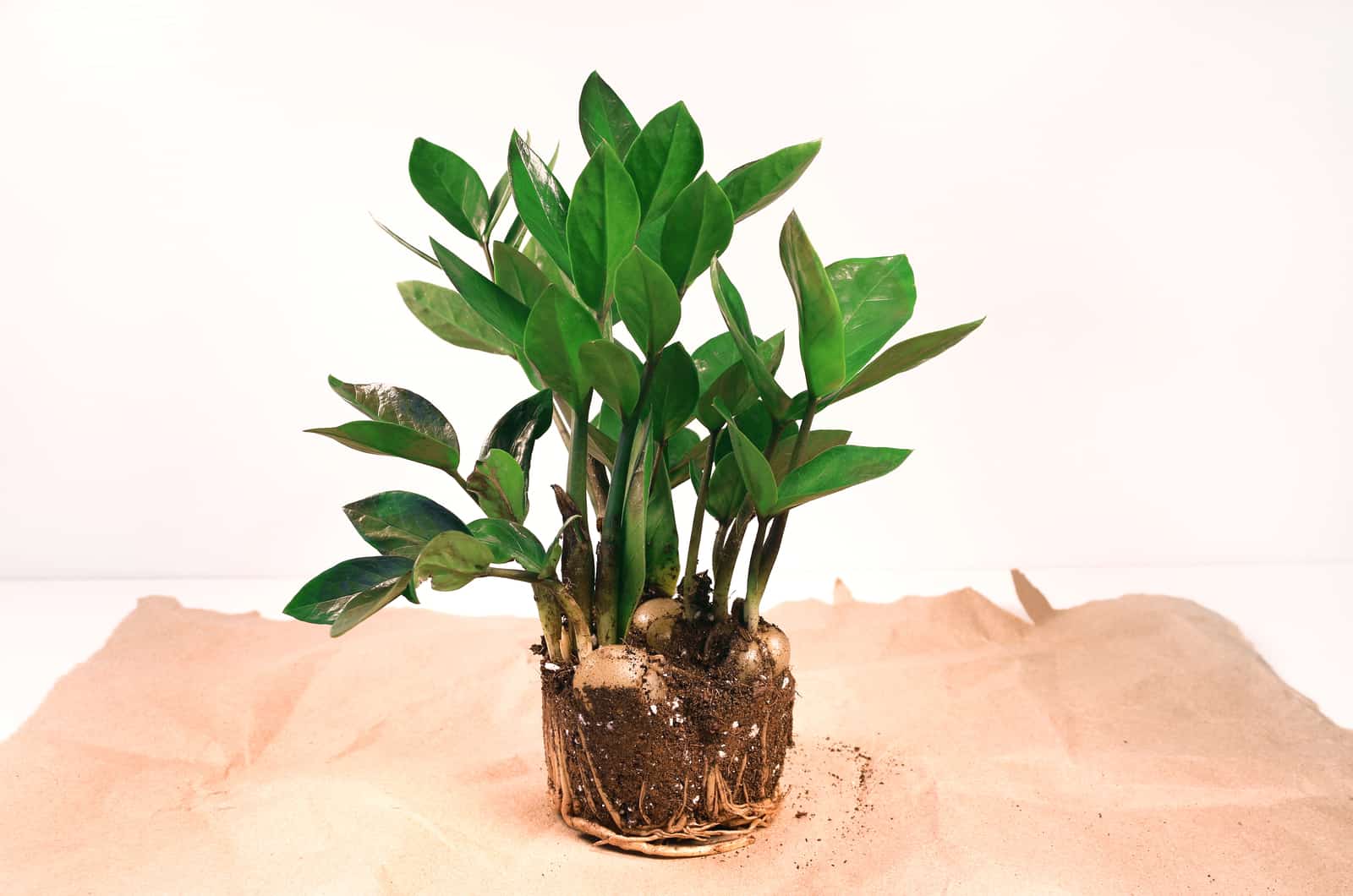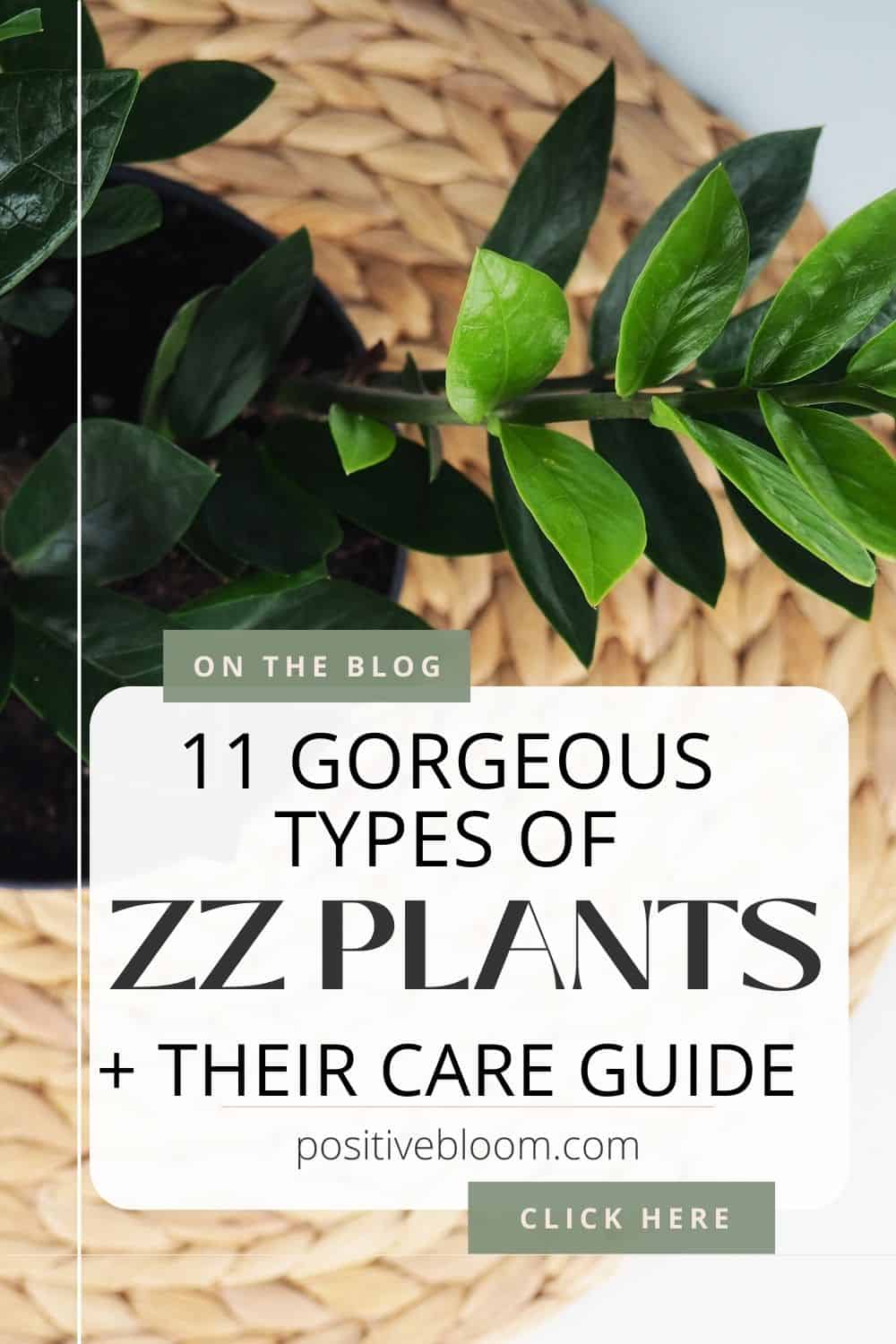The ZZ plant is the favorite species of many growers because it can thrive in low-light conditions and doesn’t require frequent watering.
We all recognize the succulent-like, oval green foliage, but did you know that there are many types of ZZ plants just waiting to be explored and adopted?
You can get green or almost black varieties, variegated or single-colored ones, ones with more prominent or shorter foliage, etc.
We singled out 13 notable species you can grow in your home and included a short care guide for each to get you started!
11 Types Of ZZ Plants
The most common types of zz plants are the cultivar Raven, regular ZZ plant, Zamicro, and Zenzi, but there are so many other species you should explore.
There are ZZ plants with white or golden variegations, as well as dwarf and regular varieties just waiting for you to buy them. Even completely white ones!
Also, you can use different varieties of zz plants to create good feng shui; you just have to find the right one.
1. Zamioculcas Zamiifolia ‘Dowon’ (Raven ZZ)
The Raven ZZ plant has become more and more popular in recent years. The leaves of this plant start off as light green, but then obtain a purple-black shade that catches the eye.
It grows slowly and only gets about 30 inches tall, which makes it perfect for smaller places and corners.
2. Zamioculcas Zamiifolia ‘Emerald Palm’ (Regular ZZ Plant)
This plant is the classic ZZ plant we all know, and it goes by many nicknames: Zanzibar Gem, Emerald Palm, Zuzu or Eternity plant, etc.
The glossy, dark green leaves are oval and more prominent than those of the ‘Dowon’ cultivar (Raven ZZ).
Since this is the textbook variety, it isn’t a cultivar, but a true species of the Araceae family.
It can get up to 5 feet tall, but usually stays between 2-3 feet, so you won’t have to worry about it taking up all your space. It is semi-erect, though, so it will spread more than regular indoor plants, which is something to bear in mind.
3. Zamioculcas Zamiifolia ‘Jungle Warrior’
This cultivar looks almost exactly the same as the Raven ZZ plant. It also has green leaves that turn almost black as they mature.
They’re also the same height (around 2 feet tall), although there is one difference between them.
The ‘Jungle Warrior’ is usually distributed in Australia, while the nurseries of Europe and North America typically sell the Raven plant.
4. Zamioculcas Zamiifolia ‘Lucky Classic Plant’
The lucky classic plant has cone-shaped leaves, which makes you wonder whether this really is a ZZ variety.
Unfortunately, this zz plant is toxic to cats due to the accumulation of calcium oxalate in its medium-dark green foliage, which it carries on its fleshy stems.
It shoots up from its rhizomes and is usually between 15-25 inches tall, making it perfect for smaller areas, office desks, and coffee tables.
5. Zamioculcas Zamiifolia ‘Lucky Giant’
The ‘Lucky Giant’ is one of the largest types of ZZ plants and can get over 3-4 feet tall, even as a houseplant.
The medium-dark green and shiny leaves are the most striking features of this cultivar, although its matching fleshy stems add to the allure.
6. Zamioculcas Zamiifolia ‘Lucky White’
This rare variety has classical ZZ-plant foliage; only it’s streaked with yellow, creamy, or purely white variegations.
(If you notice yellow leaves, don’t be afraid; it could be natural and nothing to do with lack of nitrogen or darkness!)
The ‘Lucky White’ cultivar is slow-growing (just like all ZZ plants) and can only get between 20-30 inches tall, making it suitable for any spot in your home.
7. Zamioculcas Zamiifolia ‘Supernova’
This native of Africa is another plant that resembles the Raven ZZ plant, and it also has lighter young leaves that obtain a darker green color as they mature.
So if you notice some black spots on your zz plants, first ensure they’re not part of their natural color, and then examine whether it could be over or underwatered, burnt, etc.
The fleshy stems protrude from the soil and grow up to 30 inches in height.
8. Zamioculcas Zamiifolia ‘Variegata’ (Gold Variegated ZZ Plant)
Another variegated ZZ plant is the Zamioculcas zamiifolia ‘Variegata’, although the bright yellow leaves of this plant are almost golden in the shade, making it a unique and rare variety.
The leaves can be wholly gold or just speckled with golden dust, and since the plant only gets between 2-3 feet tall, you can place it wherever you like.
9. Zamioculcas Zamiifolia ‘Zamia Albino’
The ‘Zamia Albino’ produces almost entirely white or yellow-white leaves that will definitely be a conversation starter for your dinner party.
And if you grow it in bright indirect light, its variegation will only be more vibrant.
This ZZ plant is another species that gets between 2-3 feet tall, so you won’t have to worry about where to put it.
10. Zamioculcas Zamiifolia ‘Zamicro’ (Dwarf Zamicro ZZ)
The ZZ Zamicro has dense and small leaves, unlike other ZZ plants. And the great news is that it comes in a dwarf variety as well.
The foliage of this plant is primarily bright green, but then it turns darker and darker as they grow older.
The dwarf Zamicro ZZ plant is always under 2 feet tall and will look adorable in any decor.
11. Zamioculcas Zamiifolia ‘Zenzi’ (The Dwarf ZZ Plant)
Another dwarf variety we want to mention is the ZZ Zenzi. This plant has dark green foliage that curls backward and is more compact than other species.
It’s no larger than 15 inches and can decorate any place you imagine.
12. Zamioculcas zamiifolia ‘Black Cherry’
A moodier take on the Raven ZZ, ‘Black Cherry’ starts green and deepens into velvety black with hints of burgundy. It’s bold, dramatic, and pairs perfectly with sleek, modern decor. Same low-maintenance care, just extra aesthetic.
13. Zamioculcas zamiifolia ‘Lucky White’
A rare variegated ZZ with creamy white-green leaves. Needs bright, indirect light to keep its colors crisp. Slightly fussier than regular ZZs, but totally worth it for the unique, ghostly vibe.
Care Guide For All Varieties Of ZZ Plants
The plant care guide for ZZ plants is incredibly simple; you can keep it in indirect light or low light levels, water it only when the top 2-3 inches of the potting medium is dry, and plant it in well-draining soil.
But a master gardener knows more: when to feed it, how to repot and propagate it, and how to prune it, so we’ll also discuss these things as well.
And lastly, if you see that your zz plant is drooping, always check whether all its conditions are met before treating it for root rot, for example.
Light Requirements
ZZ plants flourish in indirect light, so they’re perfect for indoor settings.
What’s more, they can actually tolerate and thrive in low-light conditions, so you can place them in your office or darker corners of your home.
These species can even grow outdoors in USDA zones 10-12, although you will have to find a spot protected from the hot middays and afternoons.
Water And Humidity
When it comes to ZZ plant watering needs, it is more like a succulent than a philodendron. You should irrigate it only when the top part of the potting mix is dry, which may take up to three weeks.
Water this Zanzibar Gem until you can see the moisture draining out through the holes in the bottom, then empty the tray, and put your plant back in its place.
Humidity
Another fantastic thing that shows how effortless it is to care for this plant, is that it can thrive in average household humidity and tolerate drier conditions.
However, if you want to create a perfect environment for it, maintain relative humidity between 40-50%. You can achieve this by spraying your ZZ with water or by occasionally turning on a humidifier.
Ideal Temperature For ZZ Plant Types
Zamioculcas zamiifolia species do well in temperatures between 60-75°F, although they can tolerate outdoor temperatures as low as 30-40°F (but they won’t grow a lot at this point).
If you want to keep your plant healthy and thriving all year long, keep it away from temperatures below 45°F.
Also, don’t place your ZZ plant near AC, heaters, doors, drafty windows, etc., since there are large temperature fluctuations in these areas, which can stress your plant.
Soil And Fertilizer
The best potting soil for the ZZ plant would be well-draining, aerated, and mildly acidic, with a pH between 6.0-7.0.
Many mixes meet these requirements, and you can get them at local nurseries or online.
But if you want to make one yourself, simply mix two parts potting soil, one part coconut coir, and one part horticultural sand.
Fertilizer
Well-balanced fertilizers such as triple 10, triple 14, etc., are the best choice for feeding your ZZ plants.
Dilute them in water according to the instructions, and feed your plants once per month during their growing season.
Repotting This Houseplant
The ZZ plant is a slow-growing species, so you only need to repot it every 2-3 years, depending on whether you can see its roots coming out of the drainage holes.
You can also change the soil once a year without moving it to a larger container as long as it isn’t root-bound, which will replenish the nutrients.
Step 1. Take the ZZ plant out of its current pot and gently separate the roots if they’re all intertwined. You can even prune them a bit if they’re too long!
Step 2. Choose a new planter that’s 1-2 sizes larger than the previous one, put some soil in the bottom, place your ZZ in it, and fill the container with the potting mix.
Step 3. Water your plant thoroughly and return it to its usual position.
Pro tip: If your ZZ is large and the stems are leaning, you can use metal or bamboo stakes to support the shoots.
This video has some great tips for repotting ZZ houseplants:
ZZ Plant Propagation
The propagation of zz plants is another straightforward thing (just like everything about this species), and you can successfully multiply it through division, leaf, and stem cuttings.
When propagating this plant from cuttings, simply take some healthy leaves or stems, place them in water or soil, keep them in a bright location, and wait until the roots develop.
Dividing the roots does require a bit more effort, so we’ll describe this process step-by-step.
Here are some more tips for multiplying the ZZ plant from cuttings:
Step 1. Take your ZZ out of its pot, remove the dirt, and wash the roots for a better view.
Step 2. Determine how many stems have their own roots since these parts can be grown as individual plants.
Step 3. Plant the baby plants into new containers that can fit their roots, and water them and the mother plant thoroughly.
You’ll soon witness new growth, regardless of the propagation method!
Pruning
ZZ plants don’t need regular pruning, although you should remove all discolored, disfigured, and diseased leaves.
You should also remove leggy shoots or even cut the large ones in half so that you can have balanced plant growth.
We also love shaping this plant and creating a lovely texture by shortening the front stems and leaving the large shoots behind.
But no matter what kind of pruning you prefer, you should always sterilize your tools before doing it to prevent the possible transfer of fungi spores and bacteria into healthy plants.
FAQ
Is the black ZZ plant rare?
The black ZZ plant is not rare anymore due to its popularity, but it was a rare variety before.
If you want a truly unique ZZ plant, you can opt for variegated ones, such as the golden variegated ZZ plant or Lucky White. These plants are more difficult to find, and if you do, they may cost anywhere between $25 to $200, depending on the size.
What is the history of the ZZ plant?
This plant has existed for centuries and was first described in 1829 when it was named Caladium zamiifolium. In 1859, it was reclassified to the genus Zamioculcas, but it got its present name, Zamioculcas zamiifolia, in 1905.
This plant is native to Africa, and it spread all over the world in 1966 when Dutch nurseries propagated it and exported it to every corner of the globe.
Final Thoughts
There are many types of ZZ plants, but the most famous ones are the Raven ZZ plant, ‘Emerald Palm’ or the regular ZZ plant, the Lucky Classic plant, Lucky Giant, and Lucky White, Zamia, Zenzi, Zamicro, etc.
These plants come in all different colors, from classical green to black, white, and golden.
But one thing that they all have in common is their care guide. Simply keep them in indirect light and well-draining soil, and only water them once the potting mix dries out at the top.
You don’t have to repot them very often, you can easily propagate them by division or leaf and stem cuttings, and you only need to prune the unhealthy parts.
The ZZ plant is a perfect gift for a beginner gardener or someone with a hectic schedule.
Enjoy this exotic species, and until next time!
Like this post? Share or pin it for later!

